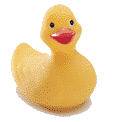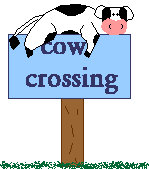|
Class Comments
I might use this area to post comments people have sent me on how they feel class is going and topics they'd like to
see covered in more (or less!) detail. Any ideas?


PROBLEM SOLVING WITH BLOCKS
Blocks are a great manipulative for young children. They can be used to teach many things, but one of their best uses
is to encourage children to problem solve.
SORTING BLOCKS
Have your children sort their blocks by color, shape or size.
PATTERNING
Using the sorted piles from the activity above, make a pattern with the blocks.
Example: you had your child sort the blocks by shape.
Make a line of blocks, such as; two square blocks, one rectangle block, two square blocks, etc. Have your child try to
match your line with an identical one below it.
PROPORTION
Find a large rectangular block and have your child find two blocks that equal the same size as the one larger block.
Look for other blocks that are double or other multiples of smaller blocks.
Set out a balance scale and have children put a large block on one side and then experiment finding a group of smaller
blocks that will equal the size of the larger block.
MOVING BLOCKS
Tell your children that you need to move the blocks in your room (or house) to a new location.
Have your child or children try to think of ways you can move the blocks.
BLOCK EXPERIMENTS
Here are some ideas for things children could experiment with using blocks.
Set out some squares of flooring. Have your children decide which surface is the easiest to build on. (Wood, carpet,
rubber, artificial turf, cork board, etc.)
Set out a cardboard box. Have your children see how many blocks they can fit into the box.
Weight blocks to see which block is the heaviest.
Have children see how high they can build a tower.
BLOCK PROJECTS
Give your children a project to build. Examples: a hill, a road, a house, a bridge, a shape, a letter, etc.
Perhaps break them into two groups and see how different children solved the same problem in different ways.
Developmentally Appropriate Care: What Does It Mean?
The term developmentally appropriate care is commonly used by child care professionals to describe care that takes into
account the level of physical, social, emotional, and intellectual development of a child.
Guidelines help both pre-k providers and parents understand
Appropriate Care for Three-, Four- and Five-year-olds
Three-year-olds are provided with learning activities that emphasize language, large motor physical activity, and movement.
Activities include puzzles and blocks, wheel toys and climbers, dramatic play acting and story telling.
Four-year-olds enjoy a greater variety of experiences and more activities like cutting paper and fabric, other art activities
and cooking. They can recognize shapes, colors, and use basic math and problem-solving skills.
Some four-year-olds and most five-year-olds combine ideas, have a growing memory and are developing fine motor skills.
They display a growing interest in the written language. They are developing an interest in the community and enjoy special
events and trips.
Adults listen, encourage creative play, join in activities, build self-esteem, and set consistent limits.
Developmentally Appropriate Equipment and Space Guidelines
Preschoolers need more space. Play spaces should be varied. In addition, they need active as well as quiet spaces. They
should also have a place to store personal items. A child-size toilet or potty chair and a way to wash their own hands are
also helpful. They work both individually and in small groups and are beginning to like to be in larger groups too.
Preschoolers need a variety of toys for play. Art materials, puzzles, toys that produce sounds, and tricycles are typical
equipment for this age.
Developmentally Appropriate Care to Prepare Your Child for School
Some preschool programs and classrooms promote teaching your child skills that prepare them for school. While early academic
learning gives children skills, there is little evidence that children show long-term benefit in school performance. Some
research shows that too much emphasis on structured learning at an early age causes children to be less interested in school.
There are, however, a number of non-academic skills your child can develop both at home and in child care to prepare them
for school. These include the following:
* Observing or the ability to notice specific things in nature and to understand what other people are doing.
* Listening, knowing what sounds mean, and being able to repeat sounds.
* Following directions in order to accomplish simple tasks and knowing left from right.
* Classifying and sorting items by shape, color, size, etc. and the ability to tell you why objects are similar or different.
* Remembering and telling you about recent activities and being able to play games that require memory skills.
* Creating and playing pretend games; feeling comfortable with doing things differently from other children.
* Cooperating and understanding how to work with others without being overly competitive.
General Features of Developmentally Appropriate Care
Child care professionals that practice developmentally appropriate care have the following list of characteristics. They:
* are patient and supportive with children;
* promote creativity, discovery, and exploration
* encourage children to take initiative in selecting activities;
* understand the individual capabilities of children;
* interact with the children by talking to them as well as listening to what they have to say:
* allow children to do things for themselves:
* offer choices of activities and materials;
* set and enforce reasonable limits; and
* are willing to use different methods of care to meet each child's abilities and needs.

|
|
 |
    
Thoughts at the Bottom of a Beanstalk
Once upon a time there was a little boy named Jack who was about to climb his very first beanstalk. He had a fresh haircut
and a brand-new book bag.
Even though his friends in the neighborhood had climbed this same beanstalk almost every day last year, this was Jack's
first day and he was a little nervous. So was his mother.
Early in the morning she brought him to the foot of the beanstalk. She talked encouragingly to Jack about all the fun
he would have that day and how nice his giant would be. She reassured him that she would be back to pick him up at the end
of the day. For a moment they stood together, silently holding hands, gazing up at the beanstalk. To Jack it seemed much bigger
than it had when his mother had pointed it out on the way to the store last week. His mother thought it looked big, too. She
swallowed. Maybe she should have held Jack out a year...
Jack's mother straightened his shirt one last time, patted his shoulder and smiled down at him. She promised to stay and
wave while he started climbing. Jack didn't say a word.
He walked forward, grabbed a low-growing stem and slowly pulled himself up to the first leaf. He balanced there for a
moment and then climbed more eagerly to the second leaf, then to the third and soon he had vanished into a high tangle of
leaves and stems with never a backward glance at his mother.
She stood alone at the bottom of the beanstalk, gazing up at the spot where Jack had disappeared. There was no rustle,
no movement, no sound to indicate that he was anywhere inside.
"Sometimes," she thought, "it's harder to be the one who waves good-bye than it is to be the one who climbs
the beanstalk."
She wondered how Jack would do. Would he miss her? How would he behave? Did his giant understand that little boys sometimes
acted silly when they felt unsure? She fought down an urge to spring up the stalk after Jack and maybe duck behind a bean
to take a peek at how he was doing.
"I'd better not. What if he saw me?" She knew Jack was really old enough to handle this on his own. She reminded
herself that, after all this was thought to be an excellent beanstalk and that everyone said his giant was not only kind but
had outstanding qualifications.
"It's not so much that I'm worried about him," she thought, rubbing the back of her neck. "It's just that
he's growing up and I'm going to miss him."
Jack's mother turned to leave. "Jack's going to have lots of bigger beanstalks to climb in his life," she told
herself. "Today's the day he starts practicing for them... And today's the day I start practicing something too: cheering
him on and waving good-bye."
ATTENTION GETTERS
I use hand signals much like others use a clapping pattern. I might touch my head, my ears and my shoulders. When a child
sees me doing this he/she copies what I am doing. Soon all the children are doing hand signals. An assistant I had a few years
ago thought I looked like some of the pro baseball players when they are signaling a new play. Sometimes I just speak in a
very low whisper. The children have to listen to hear what I am saying. I might say if you can hear my voice stand up. If
you can hear my voice put your hand on your head etc. Soon everyone wants to know what they have missed.

|
